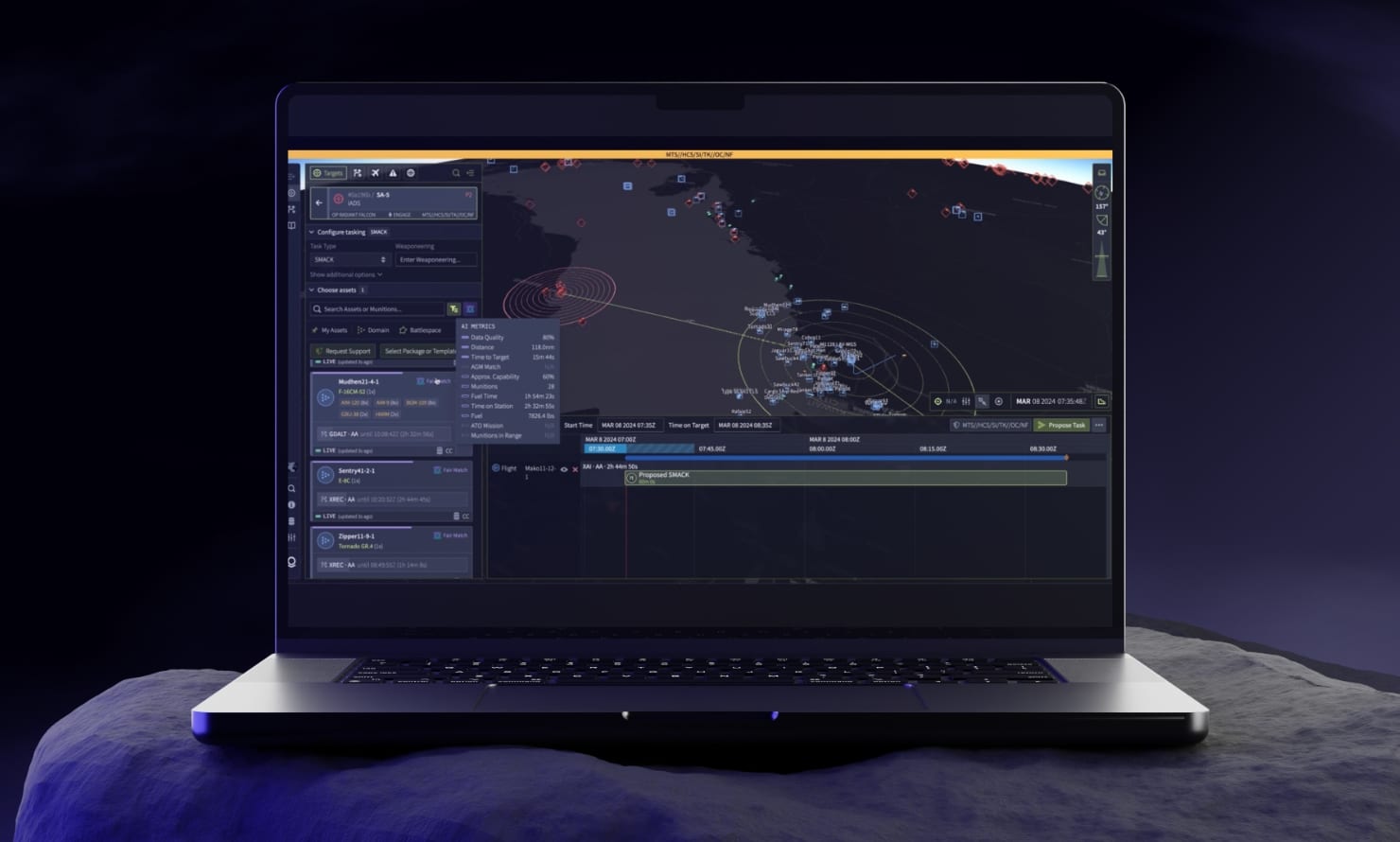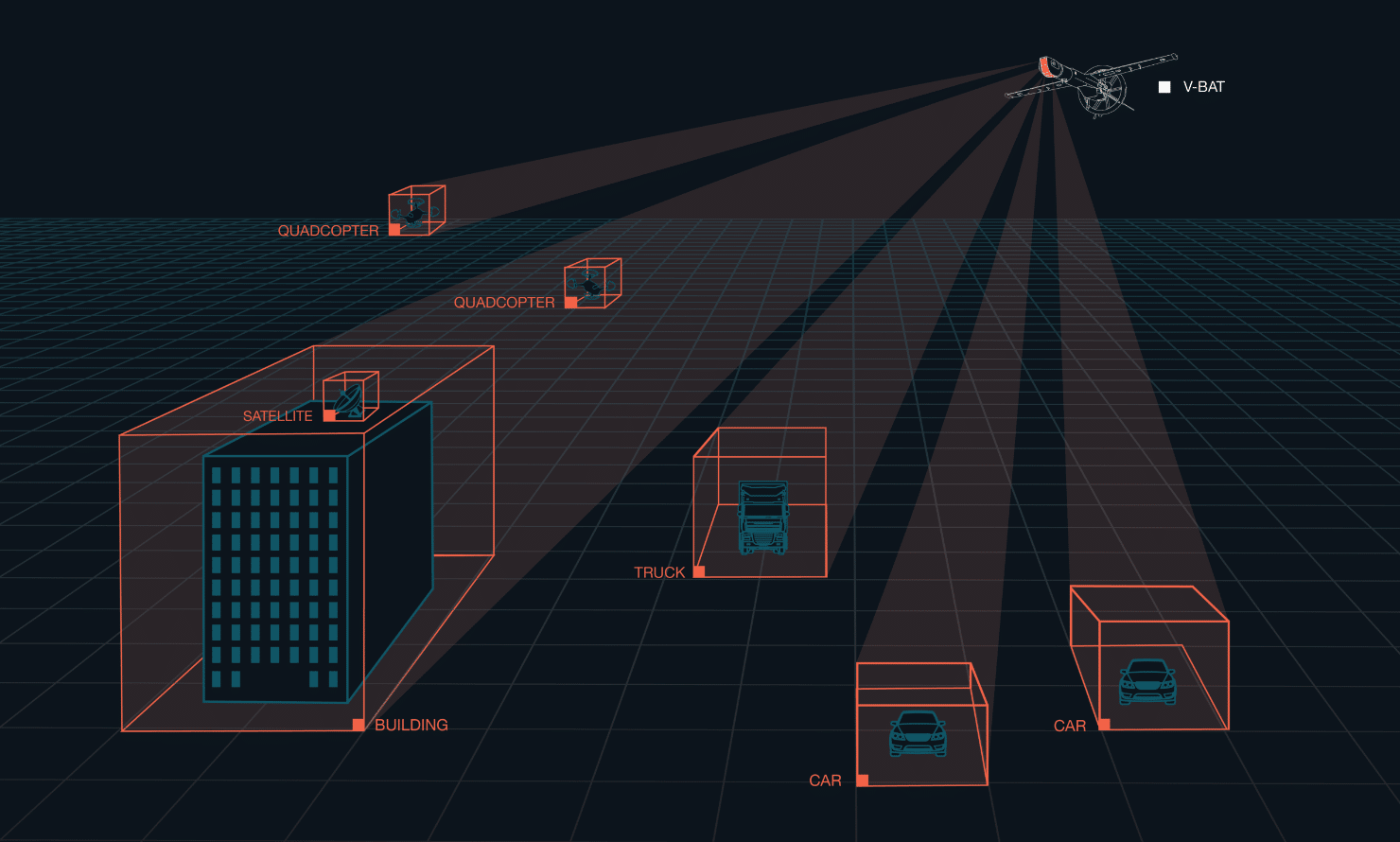[November 14, 2024]
From Concept to Combat: How Hivemind SDK Powers Next-Gen Autonomy

At Shield AI, our mission is clear: to protect service members and civilians with intelligent systems. It’s an ambitious goal, and achieving it requires efficiency and scale that surpasses traditional approaches to autonomy development. Over the last few years, we’ve proven what’s possible with real-world applications of AI-driven autonomy across various platforms and combat scenarios.
Some of our most notable accomplishments include groundbreaking work in aerial combat and real-world deployment of autonomous systems. In partnership with DARPA’s ACE program, we demonstrated AI-enabled dogfighting on the F-16/X-62 VISTA, with SECAF Frank Kendall flying in the backseat. In another remarkable feat, we went from the start of a project to the first live flight on the Kratos Firejet in just 120 days—a testament to our ability to leverage reusable, platform agnostic, technical foundations to move fast without sacrificing rigor.
Then there’s Nova 2, our fully autonomous indoor quadcopter, which has been successfully used in combat operations, as well as V-BAT, which is already making a difference in the conflict in Ukraine. These milestones are not just proof of concept; they are proof of autonomous systems delivering capabilities where it matters most. What powers these capabilities is a robust and repeatable autonomy framework—the Hivemind Software Development Kit (SDK).
Building Autonomy on a Solid Foundation: The Hivemind SDK
At the core of everything we do at Shield AI is the Hivemind SDK. Every project, from AI-enabled dogfighting to rapid deployment of new systems, starts with this cohesive autonomy development platform. The Hivemind SDK serves as a foundational framework, providing reference architectures, extensive autonomy libraries, and a full suite of simulation, testing, and analysis tools. This reusable, platform-agnostic autonomy framework drastically reduces timelines to deploy our Hivemind Pilot onto new platforms. It maximizes code reuse across diverse systems, which not only speeds up development but also enables us to rapidly iterate and improve upon our technology while leveraging all of the lessons learned from previously deployed systems.
In an industry where autonomy development is traditionally slow and resource-intensive, having a reusable core like the Hivemind SDK has been a game-changer for us. Developing advanced autonomy solutions requires massive investments in core IP, simulation environments, and infrastructure. Many companies struggle here because they lack the foundational framework needed to build autonomy efficiently and scale it across platforms. Without this, timelines are long, cost is high, and achieving reliable autonomy at scale becomes almost impossible.
Verification and Validation: The Crucial Challenge
Another often overlooked but critical aspect of autonomy is Verification and Validation (V&V). As anyone in this field will tell you, autonomy development doesn’t fail because of a lack of innovative ideas—it fails in the V&V phase. Autonomous systems must prove their reliability in the real world, and that often that requires extensive and costly flight testing that still ultimately fails to prove autonomy performance across the full breadth of relevant operational environments. requires extensive testing, simulation, and iteration. At Shield AI, we’ve invested heavily in our simulation, test orchestration, configuration management and large-scale data analysis workflows, ensuring that our systems can mature as far as possible in simulation while also extracting every drop of value from real world flight testing. This is another area where the Hivemind SDK shines, as it provides the tooling necessary to rigorously test and validate a wide set of permutations of autonomy architectures against a diverse set of relevant simulation-based scenarios.
Case Study: Integration with Palantir
Earlier this year, Shield AI and Palantir began integrating Shield AI’s Hivemind with Palantir’s Gaia to create a unified command and control system for uncrewed systems. Through Gaia’s intuitive, map-based interface, operators now gain comprehensive situational awareness across land, sea, air, and space. Hivemind-enabled systems operate seamlessly alongside human decision-makers, leveraging real-time data and shared geospatial insights to enhance mission synchronization, responsiveness, and coordination.
This integration directly addresses the complexities of managing autonomous assets in dynamic environments. Gaia’s visualization tools provide real-time telemetry, asset locations, and mission trajectories, offering operators the visibility needed to assign tasks, track progress, and adapt in real time. The addition of Palantir’s Target Workbench—designed as a Kanban board for targeting—further streamlines mission workflows, from reconnaissance to target engagement. Together, Hivemind and Gaia enable precise, scalable control, empowering operators to confidently execute complex missions.
The Future of Intelligent Systems
The proliferation of intelligent systems is no longer a distant vision—it’s happening now, driven by advances in autonomy like those we’re making at Shield AI. As we continue to evolve and refine the Hivemind SDK, we’re building the foundation for future platforms, ensuring that our technology can be deployed faster, more efficiently, and with greater reliability. For us, every success—from AI-powered dogfighting to combat deployments—is more than a technical achievement; it’s a step forward in realizing our mission of protecting service members and civilians.
About Alex
Alex Burtness is a graduate of the U.S. Naval Academy and Johns Hopkins University, where he studied systems engineering and mechanical engineering, respectively. He served in the Navy as an Explosive Ordinance Disposal (EOD) officer and worked at Brain Corp as a Director of technical program manager before joining the Shield AI team in 2021. Alex lives in San Diego and enjoys spending time with his family, with frequent trips to the San Diego Zoo as a favorite family outing.









